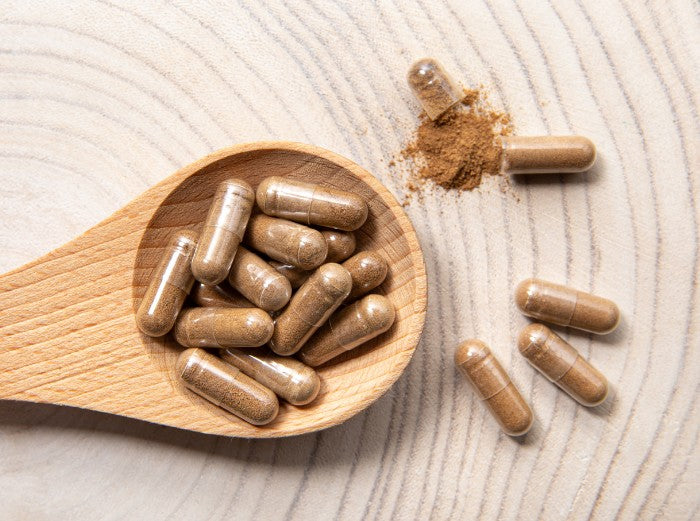Muscle cramps are sudden, involuntary, and often very painful contractions that affect millions of people, whether active or sedentary. Although generally benign, their frequency or intensity can disrupt daily comfort, particularly at night or after prolonged physical effort.
While magnesium is often considered the first solution, calcium actually plays a central role in the mechanism of muscle contraction.
What Is a Cramp and Why Does It Occur?
A cramp is a sudden and involuntary contraction of a muscle, often painful but benign. They frequently occur after long and intense efforts, or spontaneously, especially at night.
Adults and teenagers are most commonly affected, and the muscles of the legs are particularly sensitive. Cramps are sudden and painful but remain harmless, with no lasting consequences.
During a cramp, the muscle remains locked in a contracted position — which is why a slow stretch helps release it.
Common Causes of Cramps
The origin of cramps is primarily physiological, resulting from nutritional imbalances in which water and electrolytes (minerals carrying an electric charge) play key roles.
Calcium, magnesium, and potassium are the three minerals most involved — especially the first.
These electrolyte imbalances may result from:
-
Poorly balanced diet
-
Hormonal disorders
-
Excessive alcohol consumption
-
Vitamin D deficiency
Dehydration is an aggravating factor. Sweating combines the loss of electrolytes and water — one of the common reasons cramps appear.
Athletes engaged in endurance activities (cycling, trail running, long-distance running, etc.) know that regular hydration and electrolyte replenishment are essential during effort to prevent cramps, regardless of training level.
Other, More Complex Causes of Cramps
Cramps may also have more complex origins:
-
Neurological disorders
-
Side effects of statin treatments (used for cholesterol regulation)
Focus on the Role of Calcium in Muscle Contraction
Mechanism of Striated Muscle Contraction
Striated muscles (those that respond to voluntary contraction) have a very specific cellular structure made up of interwoven fibers that can slide past each other.
When a muscle contracts, it shortens and thickens — the fibers slide into a compact and “locked” position.
When bending the arm, the biceps contract and can remain contracted for a while, or relax to release the arm — the fibers then slide back into their original position.
The Central Role of Calcium
This locking and unlocking of muscle fibers requires a well-known trace element: calcium.
Calcium is delivered to the muscle through intracellular water.
During contraction, calcium is trapped to keep the fibers “attached” to one another, and it is released during relaxation.
It is easy to understand how a lack of water or calcium directly affects muscle contraction — cramps are one of the consequences.
Calcium and Vitamin D: An Essential Duo Against Cramps
Calcium in the Body
Calcium is the most abundant mineral in the body (1 to 1.5 kg in adults).
99% of it is stored and fixed in the bones (thanks to vitamins D and K2), while about 1% circulates in the cellular environment.
It is part of this free calcium that is mobilized during muscle contraction.
Average dietary requirements for adults are about 1 gram per day, but needs increase by 30 to 50% for:
-
Pregnant women (from the second trimester) to support the baby’s bone growth
-
Breastfeeding women, to compensate for calcium losses through milk
-
Athletes, since muscle contraction both requires and consumes calcium
However, for calcium from food to be efficiently absorbed by the body, it needs an ally: vitamin D.
The Role of Vitamin D
It has long been known that vitamin D plays a key role in calcium metabolism. It acts by:
-
Enabling active absorption of calcium through the intestinal mucosa
-
Regulating calcemia (blood calcium levels) via calcitriol, its active form
This regulation maintains a stable calcium level in the blood, essential for the proper functioning of muscles and the nervous system.
But if dietary intake is insufficient, or if vitamin D is lacking, the body compensates by drawing calcium from bone stores, which can eventually weaken the skeleton (osteoporosis).
This is why vitamin D is considered essential for calcium utilization in the body and for preventing muscle-related cramps.
Historically, this is the reason our grandparents were given cod liver oil — for its high vitamin D content to prevent rickets.
And What About Vitamin K2? A More Recent Key Player
Vitamin K2 (menaquinone) is often confused with vitamin K1 (phylloquinone), which is involved in blood coagulation.
Vitamin K2 works in synergy with vitamin D to:
-
Promote calcium fixation in the bones
-
Regulate calcemia (blood calcium levels)
A recent Chinese study (2022–2023), a randomized double-blind trial involving 200 seniors suffering from nocturnal leg cramps, demonstrated that vitamin K2 supplementation for 8 weeks reduced the frequency of cramps by four times compared to the placebo group.
Conclusion: Calcium Is Essential for Reducing Cramps
Cramps are uncontrolled muscle contractions that mostly result from dehydration and/or deficiency in key electrolytes — calcium, magnesium, or potassium.
Calcium plays a direct and essential role in muscle contraction: it enables the locking and unlocking of fibers during contraction and relaxation phases.
Vitamins D and K2 are indispensable for calcium bioavailability in the body — not only for bone fixation but also for regulating blood calcium levels (calcemia).
Therefore, water, calcium, and vitamins D3 and K2 logically have a direct and beneficial effect on reducing the risk of cramps — in addition to their well-known benefits for bone strength.
References
-
Hallegraeff J., de Greef M., Krijnen W., van der Schans C. (2017). Criteria in diagnosing nocturnal leg cramps: a systematic review. BMC Family Practice, 18:29. https://doi.org/10.1186/s12875-017-0600-x
-
Zittermann A. (2003). Vitamin D in preventive medicine: are we ignoring the evidence? British Journal of Nutrition, 89(5):552–572. https://doi.org/10.1079/BJN2003837
-
Institute of Medicine (US) Committee to Review Dietary Reference Intakes for Vitamin D and Calcium. (2011). Dietary Reference Intakes for Calcium and Vitamin D. Washington (DC): National Academies Press (US). https://www.ncbi.nlm.nih.gov/books/NBK56070/
-
Booth S.L., Centi A.J., Smith S.R., Gundberg C.M. (2013). The role of osteocalcin in human glucose metabolism: marker or mediator? Nature Reviews Endocrinology, 9:43–55. https://doi.org/10.1038/nrendo.2012.201
-
Kanellakis S., Moschonis G., Tenta R., Schaafsma A., Manios Y. (2012). Changes in parameters of bone metabolism in postmenopausal women following a 12-month intervention period using dairy products enriched with calcium, vitamin D, and phylloquinone (vitamin K1) or menaquinone-7 (vitamin K2): the Postmenopausal Health Study II. Calcified Tissue International, 90(4):251–262. https://doi.org/10.1007/s00223-012-9571-z
-
Simes D.C., Viegas C.S., Araújo N., Marreiros C., Manuel A., Ferraz C., Macedo A.L., Sobrinho-Simões M. (2020). Vitamin K as a diet supplement with impact in human health: current evidence in age-related diseases. Nutrients, 12(1):138. https://doi.org/10.3390/nu12010138
 04 74 03 98 80
04 74 03 98 80








